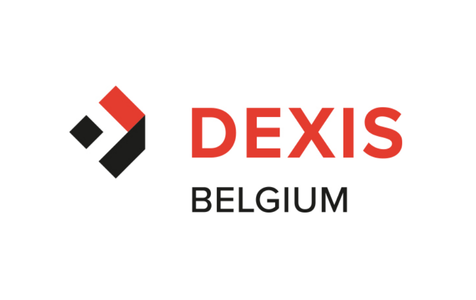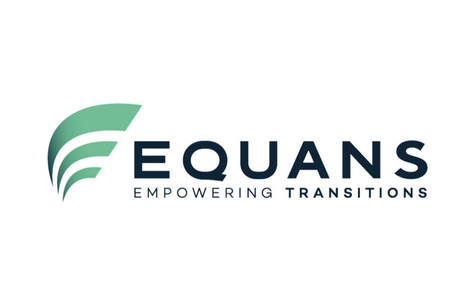Coaching trajectory: Organizing the technical warehouse
In many companies, the organisation of spare parts is inadequate or suboptimal. There are therefore several things that can go wrong:warehouse
- not all spare parts have an unambiguous name,
- the system has been neglected over the years,
- it is not clear what is actually in the warehouse,
- new parts are ordered even though they are in stock,
- sometimes the management system indicates that pieces should be present, but they cannot be found,
- and so on.
Do the above examples sound (too) familiar? Then it is time to organize your technical warehouse!

During this coaching trajectory you will, on the one hand, get the theory necessary to set up your warehouse according to the best techniques and, on the other hand, you will immediately apply these insights to your own warehouse. Because of the structure and the period between the sessions, you will have the time to effectively put the insights into practice. At the end of this programme your warehouse will be effectively organised and will function more efficiently for less money!
Programme
Session 1: Introduction to Spare Parts (half a day)
- Different types
- Why do we need spare parts: how does the need arise?
- Common problems and how to solve them?
- Identification of spare parts: classification - nomenclature - taxonomy of spare parts
- The spare parts process: from order to issue
- Part types and rules of thumb on inventory levels and management process
- Possible types of technical warehouses
- How to analyse the (current) operation of a technical warehouse
- The business case and ROI of a correctly functioning technical warehouse
- Preparation of pilot in own company: description and delineation
- Task 1:
- Self assessment of the current situation
- How are spare parts identified
- What is currently in the warehouse
- What possibilities does the IT system offer and what is currently being used
- Preparation of the data and files to be brought to the next session
Session 2: Identification of spare parts (half a day)
- Discussion of the results of the previous assignment with the application of the necessary points of attention.
- Brief review of the principles of identification and naming of spare parts and its importance.
- Setting up a taxonomy in practice and how to apply this in an IT system (ERP/CMMS/EAM) + exercise
- Naming of spare parts in practice and how to apply this in an IT-system (ERP/CMMS/EAM) + exercise
- Preparation assignment 2: Realisation of the correct taxonomy and naming on the pilot in the company.
Session 3: Item types and their specific management (half a day)
- Discussion of the results of the previous assignment with the application of the necessary points of attention
- Article types and their specific management
- ARTICLE GROUPS (wear parts, grab stock, spare parts, strategic stock, zero stock articles, repairables)
The management process per article group and how to implement this in an IT system (ERP/CMMS/EAM)
- ARTICLE GROUPS (wear parts, grab stock, spare parts, strategic stock, zero stock articles, repairables)
- Exercise
- Preparation assignment 3: Identify the different article groups in the own company, and document the new management process for the own company and record it in the own IT system
Session 4: (re)designing and organising the warehouse (half a day)
- Discussing the results of the previous assignment with the application of the necessary points of attention.
- Location of warehouse
- Type, layout and organisation of the warehouse
- Labelling and localisation of items in the warehouse
- Legal regulations and restrictions (fire hazard, storage of hazardous products, prevention of leaks)
- Safety regulations and hazards of loads at height
- Warehousing conditions and their impact on reliability and service life of spare parts
- Motors
- Lubricants and lubrication materials (funnels, etc.)
- Electronic components
- Belts
- Seals and O-rings
- Roller bearings
- Grinding discs
- Hoisting and lifting equipment
- Monitoring of hand tools, ladders, hoisting and lifting equipment
- Visit to a well equipped warehouse
- Preparation assignment 4: Make a proposal for a correctly equipped warehouse in your company
- Make an example corner of how it should be (on the pilot)
- Map the condition of the current spare parts in the warehouse
Session 5: Setting up and applying the warehouse management processes (half a day)
- Discussing the results of the previous assignment with the application of the necessary points of attention.
- Warehouse management processes in practice (points of attention)
- How to ensure a smooth purchasing process of technical articles
- Receipt of goods - delivery control - quality control
- Storage in the warehouse - points of attention and administrative handling in practice
- Issue
- Direct issue - scanning
- Reservation for a work order
- Inventory control (inventory, cycle counting, ...) and corrections
- User agreements and access management
- How to implement all this in an IT system (ERP/CMMS/EAM)
- Assignment 5:
- Draw up/review the warehouse processes for your own company and document why certain decisions were made.
- List the benefits of the new approach for the company
- At free choice: further roll out of the pilot over the rest of the warehouse.
Session 6. Return session (13h-18h)
After a few months the participants meet again to discuss with the group what they have realised in the meantime in their company. This is combined with a tour at some companies where some warehouses are visited. We conclude with a drink to celebrate the success.

About the trainer
Piet Colle is an MRO management expert at STORK and has been working for many years on optimising MRO logistics processes. The focus here is on master data where the use of standard ways of naming articles by means of clear rules and procedures is essential. Piet has experience with the integration of eCl@ss in companies and the article description within the article management of the CMMS/EAM system, but also with various logistic processes within MRO management. He pays attention to the practical set-up and operation of warehouses as well as to the legal restrictions that apply. Therefore, he also gives attention to management tools such as the KPIs for warehouse and purchasing within the MRO story.
What is a coaching trajectory?
The coaching trajectories are inspired by the renowned Chinese philosopher Confucius: "I hear and I forget, I see and I remember, I do and I understand".
A coaching trajecotry is a short training course followed by several follow-up sessions. After each session, the participants are expected to apply the concepts they have learned in their companies. During the subsequent session, experiences are shared with the other participants and challenges and solutions are discussed. Then, preparations for the next application phase are started.
The coaching trajectories are only useful when everyone has had time to prepare the assignment properly. Therefore, there are always 3 to 6 weeks between each follow-up session. Besides the theory and the follow-up sessions, we also want to learn from each other. That is why we try to keep the group small, with about 10 to 12 participants per track. After the full programme, not only has the participant gained knowledge and experience, but there has also been an improvement in the company where he works. An application trajectory therefore offers an interesting ROI for the participant and the company.
Graag min. 14 dagen voor de start inschrijven. PO kan later bezorgd worden.






